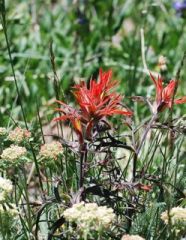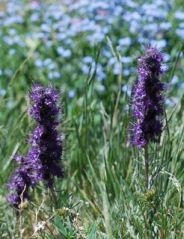 I invite you to join me on my amazing hike up Mount Washburn. The Anderson’s, in their book A Ranger’s Guide to Yellowstone Day Hikes, advise that, “If you can hike only one trail in Yellowstone, it should be Mount Washburn.” The authors also quote a description of the peak from a early park visitor:
I invite you to join me on my amazing hike up Mount Washburn. The Anderson’s, in their book A Ranger’s Guide to Yellowstone Day Hikes, advise that, “If you can hike only one trail in Yellowstone, it should be Mount Washburn.” The authors also quote a description of the peak from a early park visitor:
"If I could only choose one sight in the wonderland, it would be, by all means, that view from the top of Mount Washburn for you see there the entire park spread out before you in a single picture."
 On my drive to the trailhead, I rise over Dunraven Pass, awash with yellow flowers, and obtain a great view of the summit of Mt. Washburn. It’s original name might have been Elephant’s Back, but in 1870 the Washburn Expedition named it for General Henry Dan Washburn, leader of “one of the most important early explorations of Yellowstone,” according to Whittlesey’s Yellowstone Place Names. Dunraven Pass, 8,859 feet in elevation, bears the namesake of the First Earl of Dunraven, an Oxford educated man who was once guided in his explorations of the west by Buffalo Bill.
On my drive to the trailhead, I rise over Dunraven Pass, awash with yellow flowers, and obtain a great view of the summit of Mt. Washburn. It’s original name might have been Elephant’s Back, but in 1870 the Washburn Expedition named it for General Henry Dan Washburn, leader of “one of the most important early explorations of Yellowstone,” according to Whittlesey’s Yellowstone Place Names. Dunraven Pass, 8,859 feet in elevation, bears the namesake of the First Earl of Dunraven, an Oxford educated man who was once guided in his explorations of the west by Buffalo Bill.
Early on my hike, I encounter a yellow-bellied marmot munching on a tree limb.
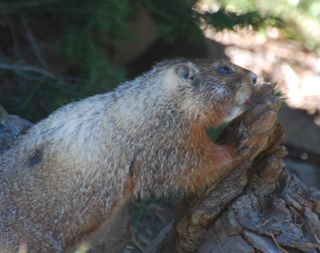
As I turn a corner, I see the Lookout Tower on the summit of Washburn. I also pass bouquets of the exquisite Sky Pilot gathered among the volcanic rocks.
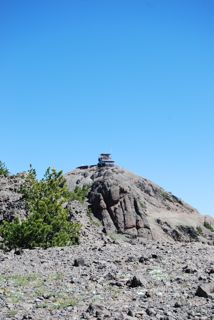
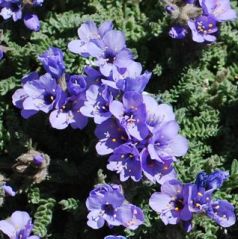
At the top of Mt Washburn, 10,243 feet, I gaze at the spectacular 360 degree view of the park.
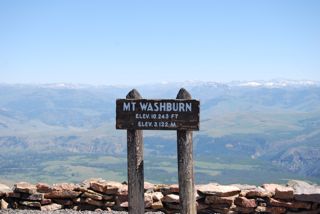
The Grand Canyon of the Yellowstone

Hayden Valley and the Grand Tetons in the distance
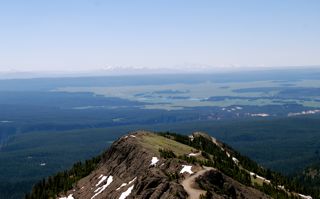
While I munch on my Luna Bar, a herd of bighorn sheep--with several lambs--join me.
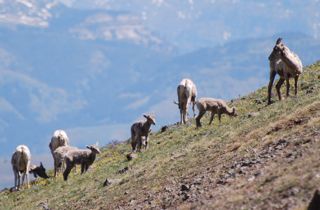
One bighorn ewe gazes at me inquisitively, perhaps wondering why I am munching on a chocolate bar when so many yummy grasses surround me.
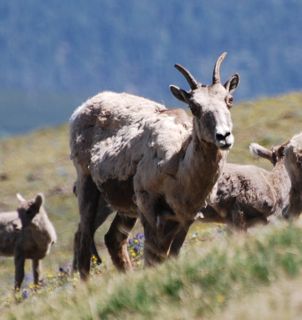
A lamb considers me as well, as two others graze nearby.
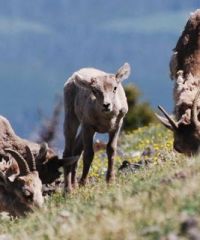

Something catches an ewe’s attention, which turns out to be a mother and lamb running to catch up with the herd.
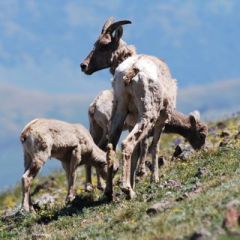
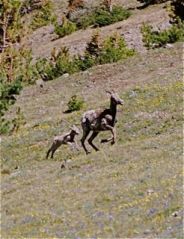
On the return trip, I stop to smell the flowers: paintbrush and silky phacelia
